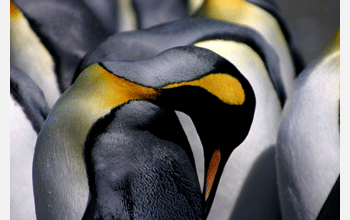Multimedia Gallery
King penguins on Macquarie Island
King penguins on Macquarie Island, which lies between Australia and Antarctica. King penguins live in the peninsula region and north towards South America. They are the second largest penguin species in the world, following the emperor.
Studies of king penguins are just one of the vast numbers of ongoing research projects that take place continually in Antarctica under the U.S. Antarctic Program (USAP), supported and managed by the National Science Foundation. Other Antarctic study areas are aeronomy and astrophysics, biology and medicine, geology and geophysics, glaciology, and ocean and climate systems. Outreach such as the Antarctic Artists and Writers program and education programs are also supported. To learn more, visit the USAP website. [Note: Please see special restrictions regarding use of this image, below.] (Date of Image: February 2005)
Credit: Mike Usher
See other images like this on your iPhone or iPad download NSF Science Zone on the Apple App Store.
Special Restrictions: [Note: Any commercial use of this image requires the photographer's permission.]
Images and other media in the National Science Foundation Multimedia Gallery are available for use in print and electronic material by NSF employees, members of the media, university staff, teachers and the general public. All media in the gallery are intended for personal, educational and nonprofit/non-commercial use only.
Images credited to the National Science Foundation, a federal agency, are in the public domain. The images were created by employees of the United States Government as part of their official duties or prepared by contractors as "works for hire" for NSF. You may freely use NSF-credited images and, at your discretion, credit NSF with a "Courtesy: National Science Foundation" notation.
Additional information about general usage can be found in Conditions.
Also Available:
Download the high-resolution JPG version of the image. (2.5 MB)
Use your mouse to right-click (Mac users may need to Ctrl-click) the link above and choose the option that will save the file or target to your computer.



